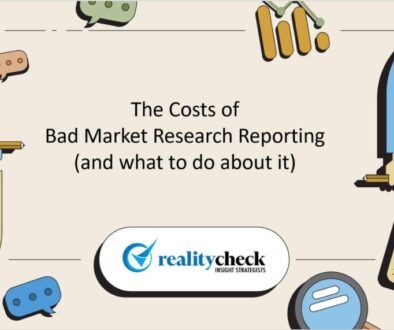Data Analysis: Qualitative Researchers are Lazy
Okay… so maybe I’ve alienated you already.
Perhaps I should rephrase: I’ve been doing qualitative research for almost 20 years and when it comes to analysis I’ve been lazy.
But I’m changing that.
The bottom line is that compared to quantitative data analysis, qualitative analysis is much more loosey goosey. So let’s be honest. When it comes to analysis, qualitative researchers tend to be lazy.
In fact, data analysis as a separate phase of the qualitative research process is often non-existent. When we do focus groups, IDIs, ethnography or online qual, analysis often happens during fieldwork. We confer with clients after each group or interview. Insights and themes emerge as fieldwork progresses. Then we hold a debrief meeting to talk about what we’ve learned. Oftentimes, when we leave the facility, the written report is a mere formality.
Granted, part of the appeal of qual is its malleability and speed. Insights are more open to interpretation, which I think gives everyone involved a greater sense of comfort and control. And clients feel they have walk-away learning. No need really to wait weeks for analysis and reporting before making decisions.
But the lack of rigorous data analysis is also qual’s biggest weakness. It’s to blame for qual’s secondary status compared to quant. Indeed, how many brand managers and consumer insights folks believe that qual is good for “exploratory” or “preliminary” insights but if you want certainty, you’ve got to do quant?
But it doesn’t have to be that way.
Qualitative research produces data that are no less worthy of rigorous analysis than quant. Where quantitative research produces numeric data, qualitative research produces language. Wonderful language that is rich, textured and revealing. Quant can’t touch it in terms of its depth. The nouns, verbs and adjectives with which people express themselves are truly windows into their non-conscious minds.
But to tease out the real meaningful insights from language, we qualitative researchers need to become more sophisticated about analysis. Content analysis and the use of text analytics are a start. And we shouldn’t be afraid to count. Yeah, that’s right. Count. Correlate. Tabulate. When we uncover themes in the data, let’s see how often they occur. For real. With certainty.
In future posts, I’ll discuss what we’ve been doing at RealityCheck to apply more rigor to qual analysis. But I’d like to hear from you. What are the ways you’ve applied more rigor to the analysis of qualitative data?
Who knows, maybe I’m the only one who’s been lazy.
























